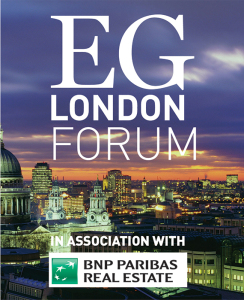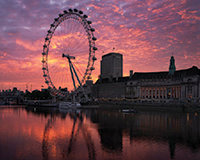Is the regeneration of London’s South Bank happening fast enough, and what difference will development make to the shape of the capital?
Reporting by Mark Simmons
The regeneration of parts of Southwark and Lambeth south of the Thames may have been slow to start, but Sam Blake, director of development and residential consultancy at BNP Paribas Real Estate, believes current perceptions of the area may be out of date. “Things are well on the way and the South Bank as a whole is already seeing a great deal of redevelopment taking place.”
 He points to schemes such as Berkeley Homes’ One Tower Bridge. “When the shops, restaurants and new theatre open, it will bring new life to the area and will link the traditional landscape of Shad Thames with the modern environment of More London.”
He points to schemes such as Berkeley Homes’ One Tower Bridge. “When the shops, restaurants and new theatre open, it will bring new life to the area and will link the traditional landscape of Shad Thames with the modern environment of More London.”
The improvement is reflected in sales values, which have rocketed to more than £3,000 per sq ft by the river from a lowly £800 per sq ft 10 years ago.
But Blake admits that for areas further from the river, a renaissance has been longer arriving. The current plans for Elephant & Castle make the area one to watch for savvy investors, however.
“This is the place that was known as the Piccadilly of the South before World War II and it is still very undervalued, with sales values of around £900 per sq ft compared with £1,400 at King’s Cross, which is comparable for access to the West End and City.
“Elephant & Castle will come into its own in the next five to seven years,” says Blake. He expects the number of tower buildings there to start to rival Canary Wharf around the same time.
Other parts of the South Bank to watch, he suggests, are Blackfriars Road – “Underrated, undervalued and historically underplanned” – and the Old Kent Road. The road, Blake believes, will be the next key development zone, with sales values as low as £600 per sq ft, though he concedes that the transformation of that locality could take up to 15 years to achieve.
He adds: “Overall, the South Bank has the economic dynamics and convenient zone 1 location to carry it forward against competing areas of London such as Old Oak Common and Canada Water.”
What do other members of the London Forum think?
 Simon Cookson, real estate partner, DLA Piper
Simon Cookson, real estate partner, DLA Piper
“To walk along London’s South Bank on a sunny weekend afternoon belies the need for its renaissance. Yet the South Bank has been able to resist development for many years now. You only need to look towards Waterloo station and the Southbank Centre to see and feel just how untouched it is.
“Is it that the local residents just do not want the South Bank to be reborn? They objected to Southbank Place and also to the Quill development – now suffering its own renaissance in the shape of a pair of residential towers.
“It is not very likely that they will suddenly become vociferous supporters of future development that may again threaten the setting of this paradoxically iconic location.
“London’s real estate market is rightly unregulated and it is perfectly capable of deciding when and where to support development. It is clear that intervention is neither necessary nor desirable. So no dramatic renaissance is called for and instead let’s support an evolution. Southbank Place and the Quill are both consented. It is likely now that these schemes will be brought forward.”
 Nick Belsten, central London director, Indigo Planning
Nick Belsten, central London director, Indigo Planning
“London’s north bank has, for more than 1,000 years, been seen as superior to the South Bank. The status quo is shifting, however, owing to investment in transport infrastructure that is delivering the diversity of uses and density of development more associated with the north bank. Delivering new transport infrastructure is hugely complex, costly and enormously time-consuming. There also has to be the political drive to make change happen. The GLA and London’s mayor have been key to facilitating this change, though, through a more comprehensive and focused approach.”
 Bill Page, business space research manager, Legal & General Investment Management
Bill Page, business space research manager, Legal & General Investment Management
“We consider the South Bank to be an established central London location. In the office market, the yield differential between the South Bank and core City has evolved from a clear discount in 2000 to parity, bordering on a premium, while prime rents of £62.50 (if one ignores what is achievable at the Shard) no longer offer any meaningful saving.
“This is not a case of mispricing risk in a secondary area: it is proximate to traditional cores with a diversified occupier base, thanks to its West End and City connections, yet it still offers a vibrant environment that risks losing its charm if it becomes too corporate.
“This is not to say its story has finished. Growth to the south was previously perceived to be limited by the railway tracks, but the smaller scale success of Union Street and larger scale regeneration of Elephant & Castle proves this is no longer the case.”
 David Waterhouse, associate director of strategic development, Design Council CABE
David Waterhouse, associate director of strategic development, Design Council CABE
“Like all cities, there are always favoured locations, and London’s riverbanks are no exception. While the north side of the river houses Parliament, the City and Chelsea, the south has long been a collection of areas that, other than near the Festival Hall, are fragmented and unconnected. “The vast scale of development at Vauxhall Nine Elms and the new Embassy quarter, which has previously been an unloved and forgotten part of the city, promises to be one of the most transformational regeneration projects in London.”











